Genebanks, the World’s Insurance Policy Against Hunger
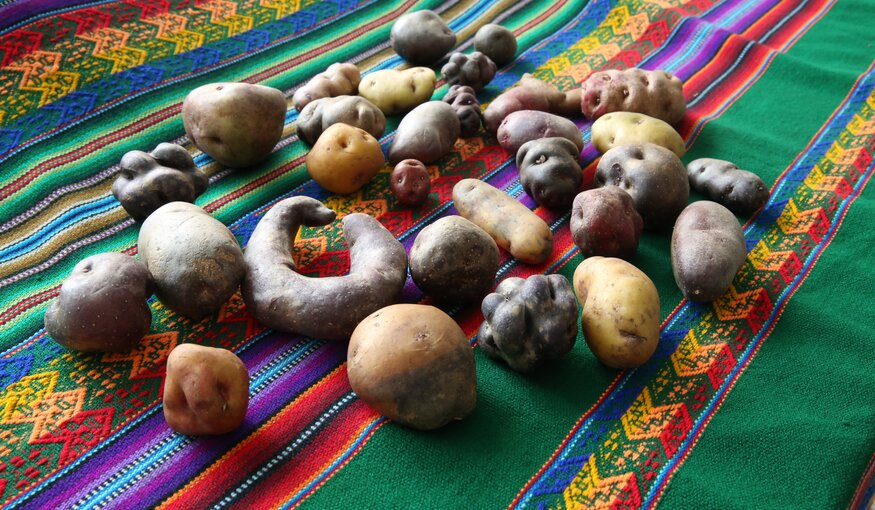
Our partners at the International Potato Center (CIP) discuss genebanks, the world’s insurance policy against hunger, in their latest blog post.
CIP is one of the 11 CGIAR genebanks the Crop Trust supports throught the CGIAR Genebank Platform, a CGIAR and Crop Trust partnership to promote the availability and use of crop diversity conserved in CGIAR genebanks. We recently had the opportunity to visit their genebank, one of world's most important collections of crop diversity and share some of our images below.
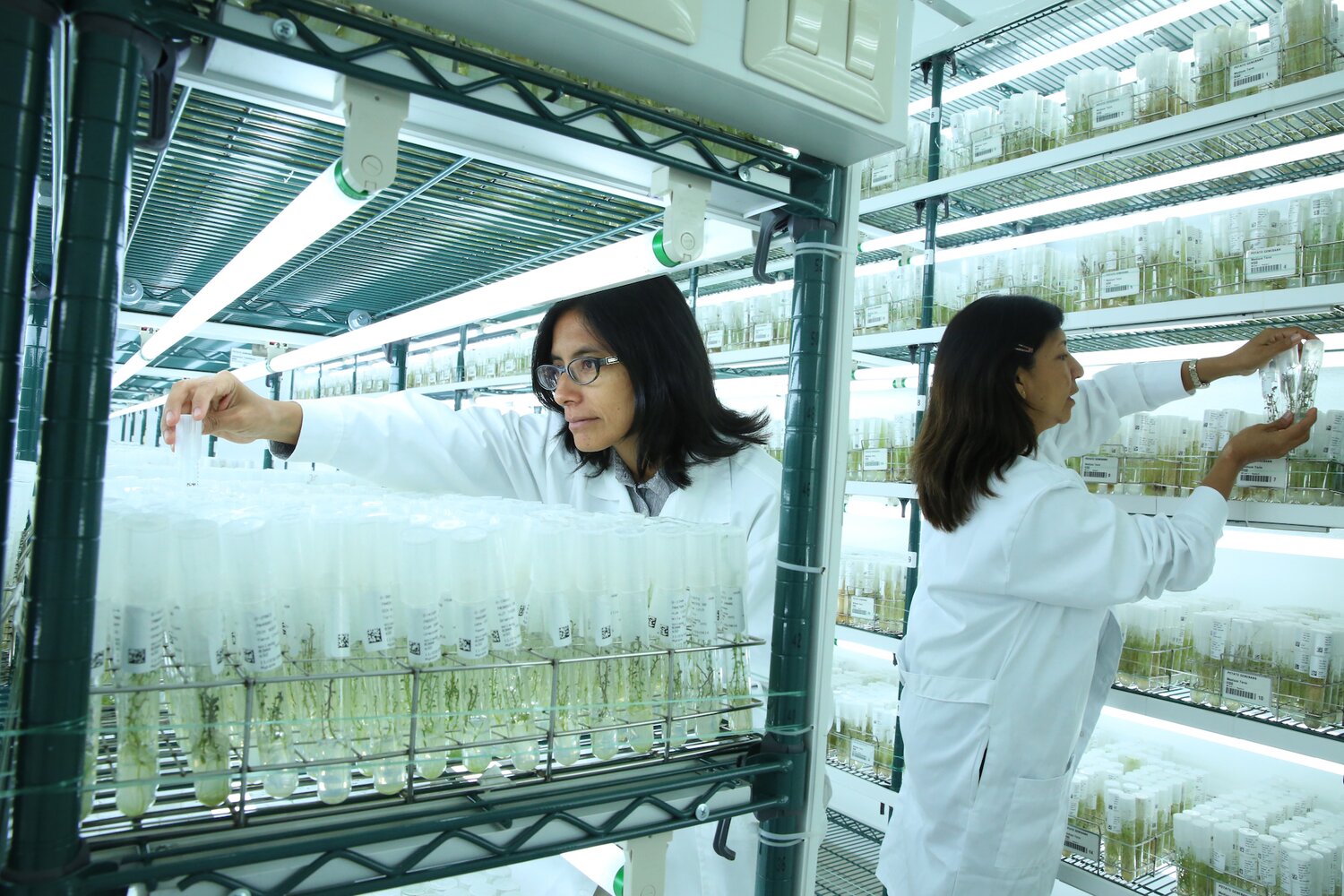
CIP’s Genebank staff visually inspect cultures of the global, in trust potato in vitro collection following standard indicators for verifying viability.
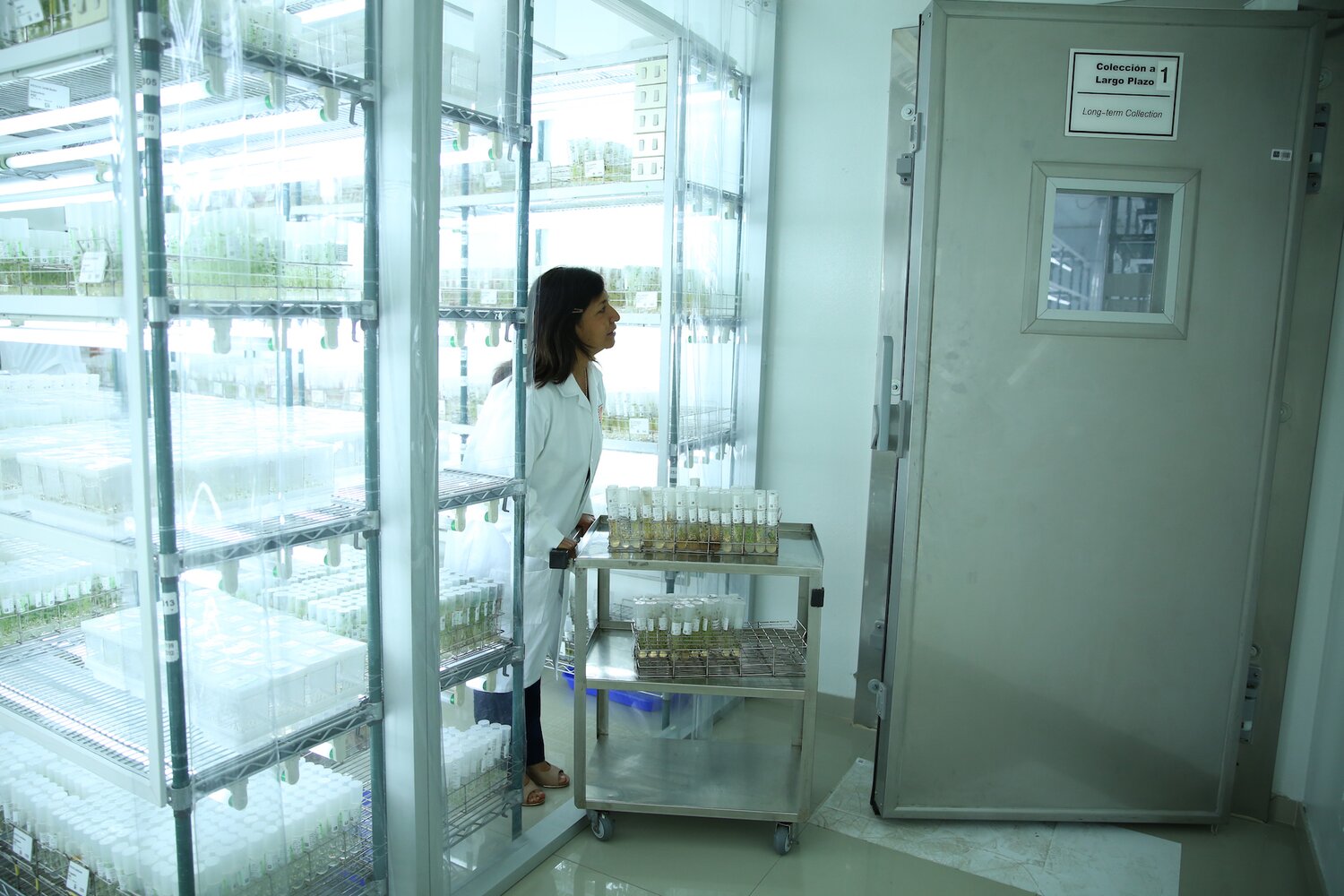
CIP’s Genenbank staff transferring potato in vitro cultures from active growth at 20oC to a cold chamber at 7oC for medium term conservation
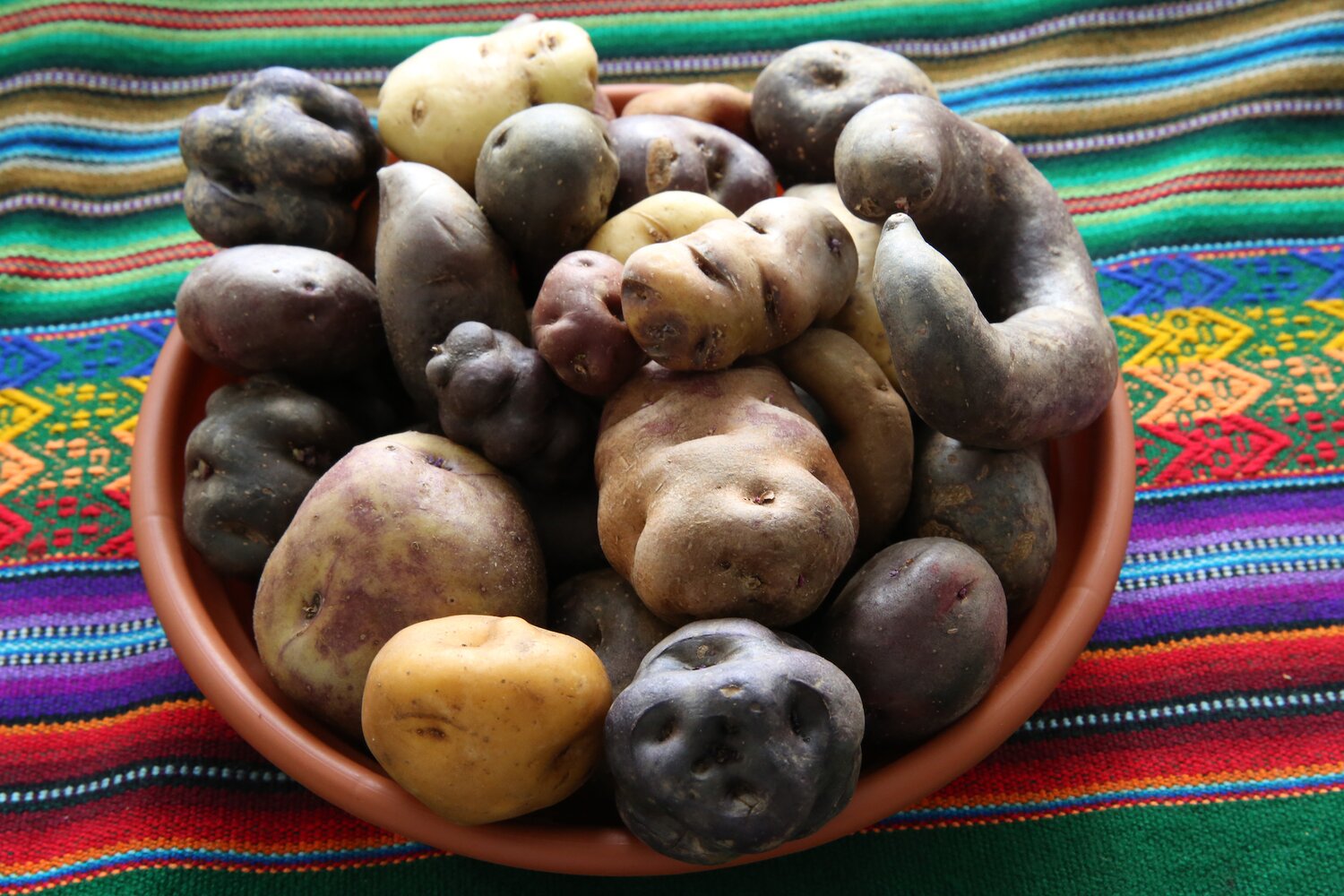
Potato landraces at the CIP genebank.
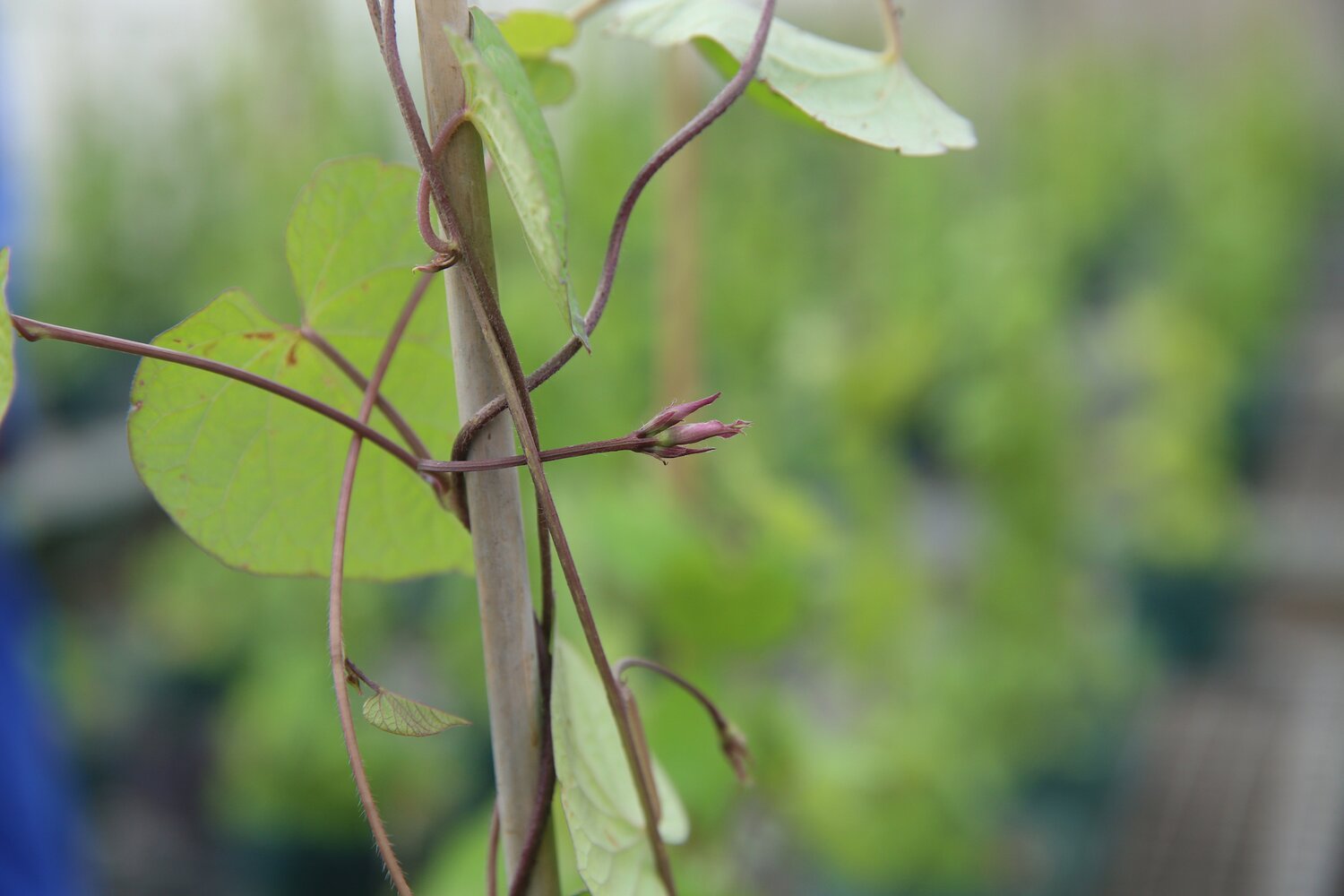
Sweet potato with flower bud at the CIP genebank.
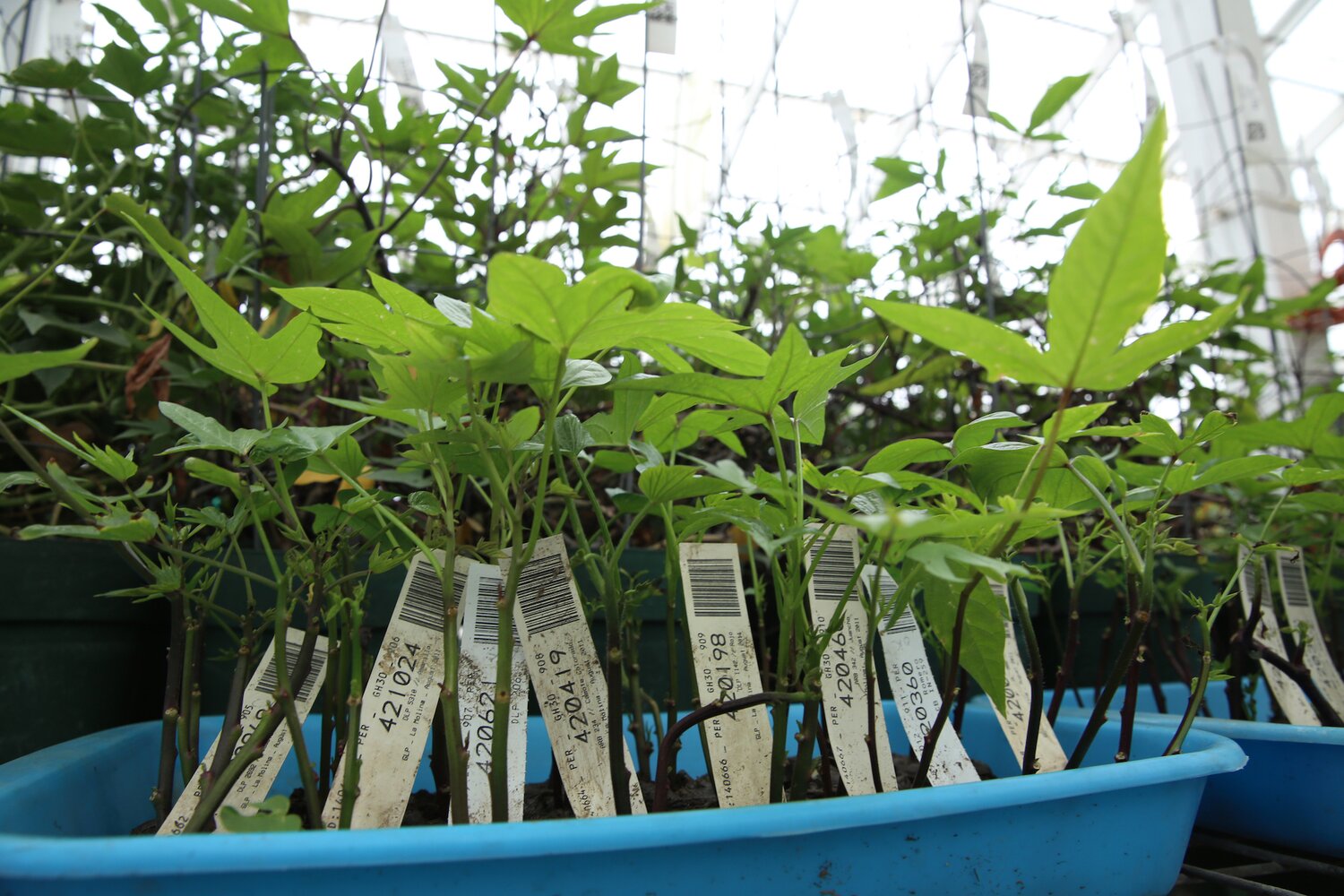
Sweet potato cuttings maintained in the greenhouse ready for transplanting.
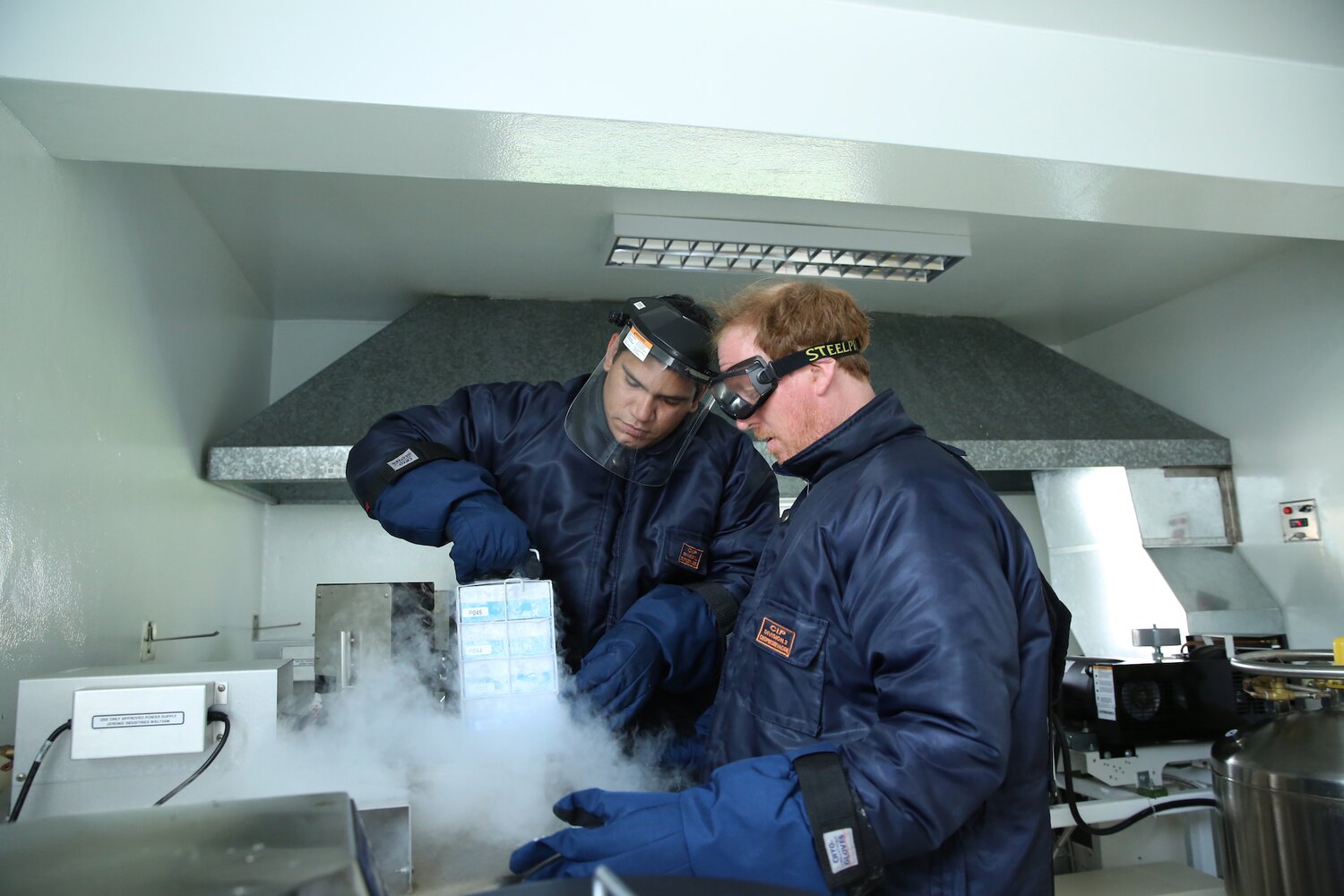
Staff maintaining cryopreserved shoot tips stored in vials inside cryoboxes.
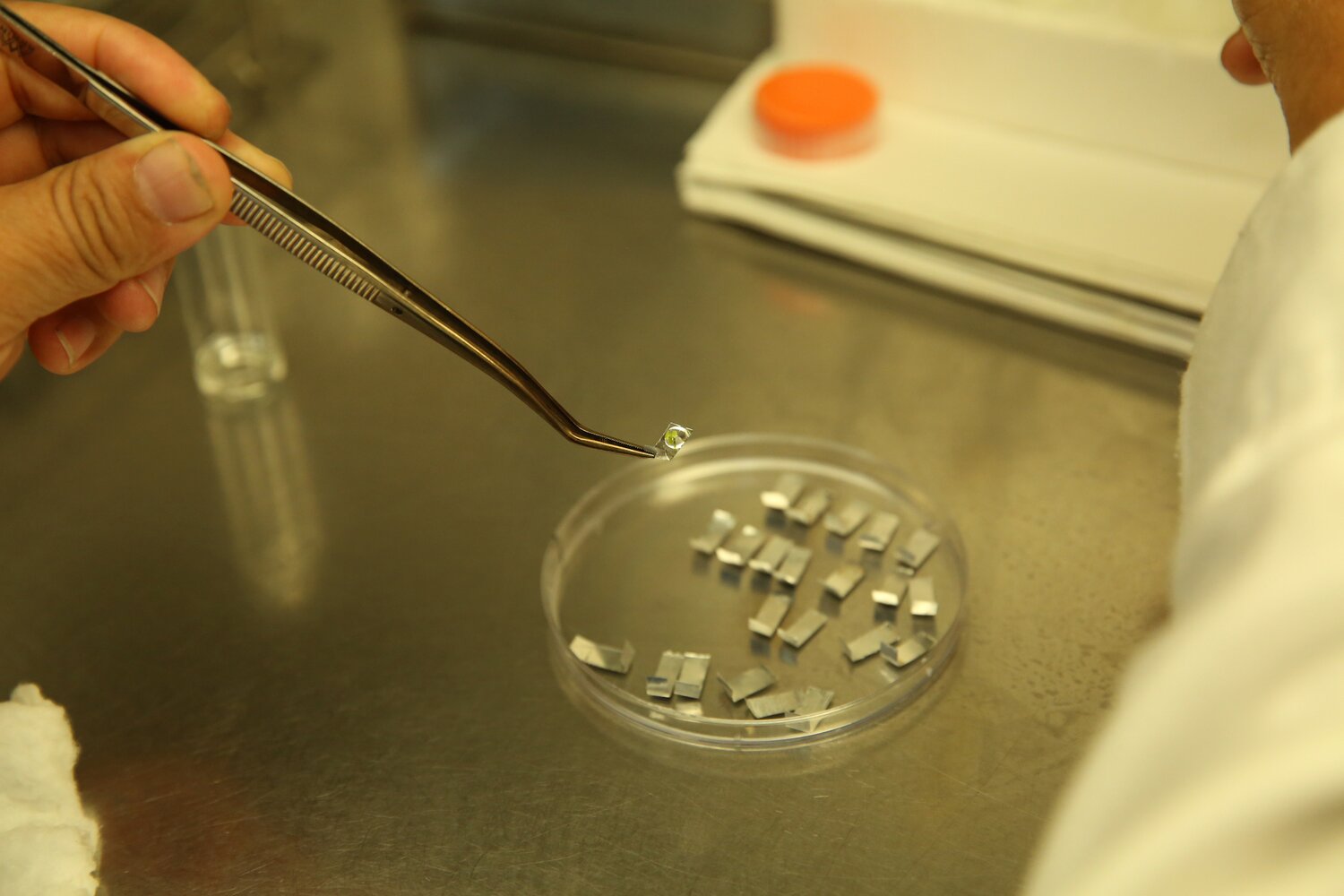
Aluminum foils strips with treated potato shoot tips ready for cryopreservation
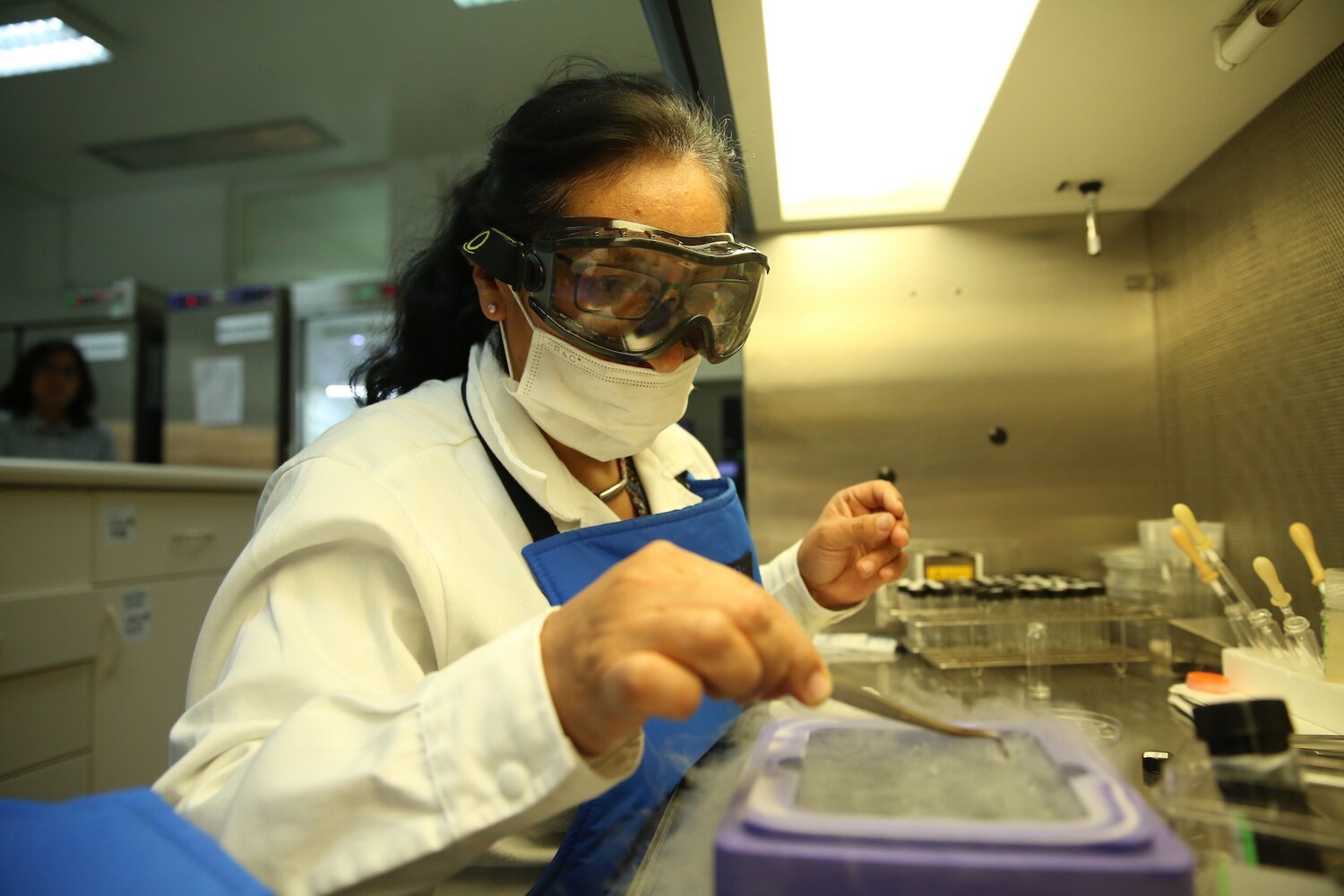
Freezing of potato apical buds in liquid nitrogen (LN) for cryopreservation. Ten apical buds are contained in a drop of PVS2 placed on a strip of aluminum foil and stored inside a cryovial filled with LN.
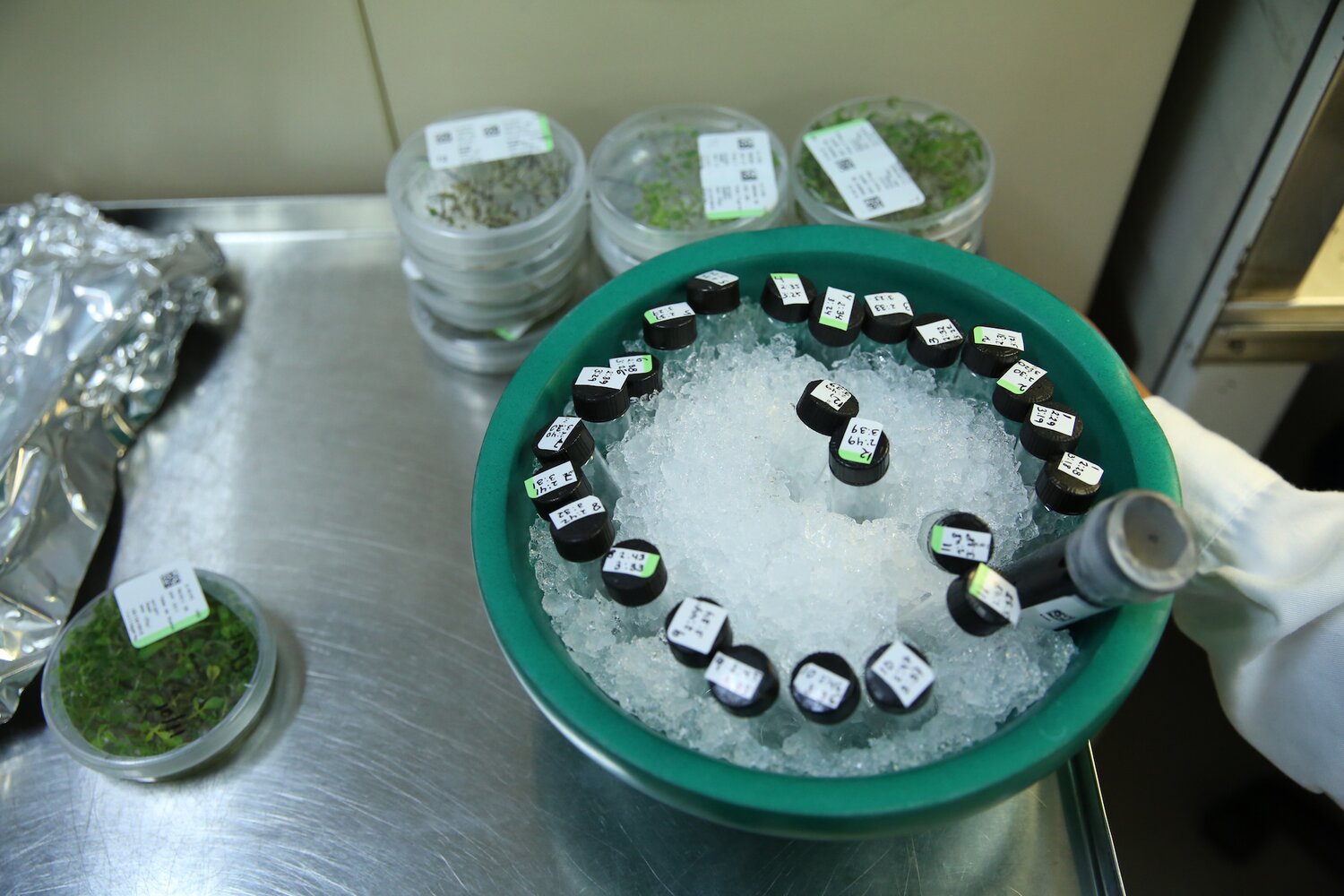
Treatment of potato apical buds with cryoprotective solution (PVS2). Vials are placed on ice to increase survival from the toxicity of the PVS2 solution.
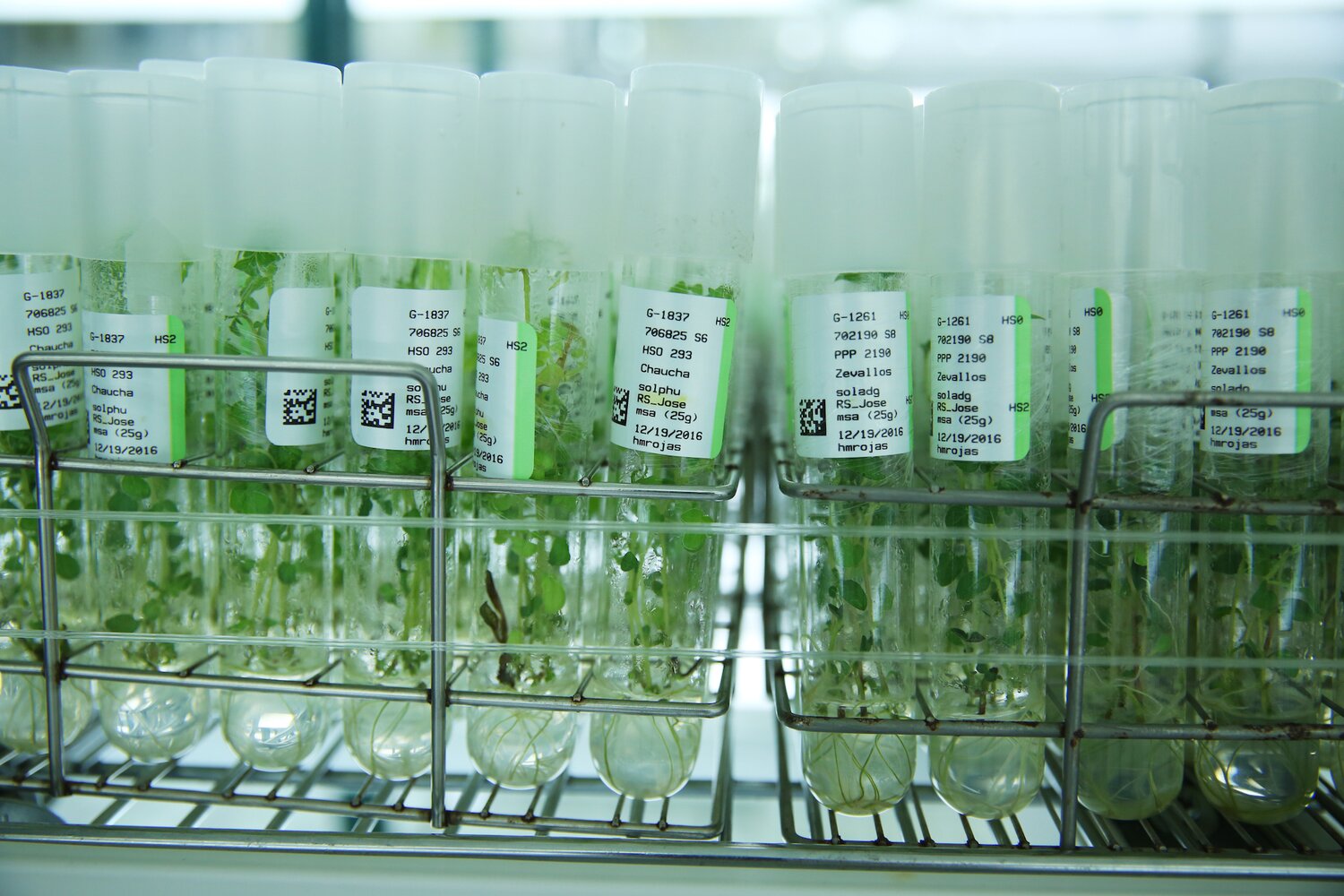
Potato in vitro cultures showing labels with bi dimensional barcoding (QR), identification data, health status, crop species, micropropagation date, culture media and propagator name.
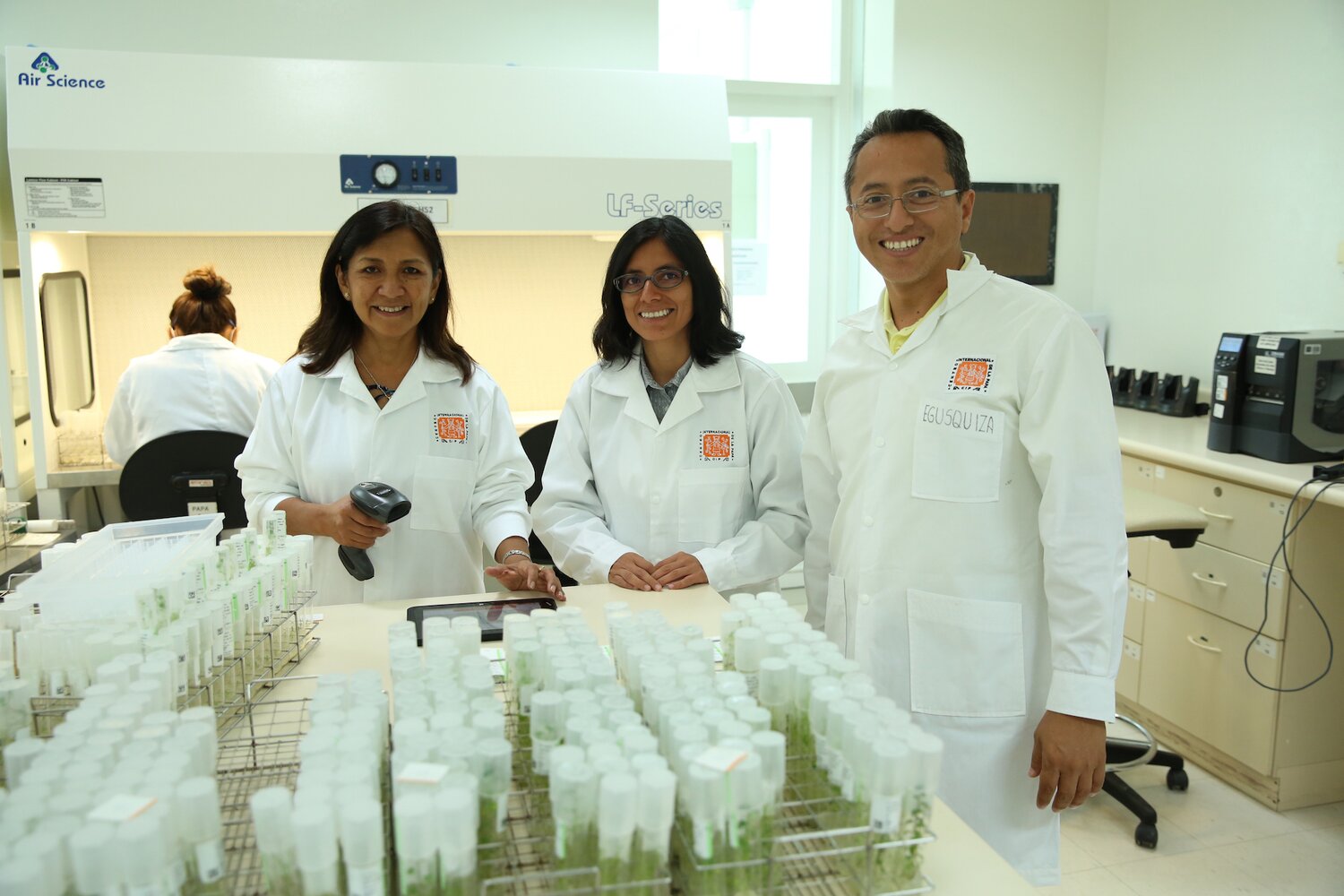
The CIP genebank in vitro team using handheld data loggers in the evaluation of in vitro viability of CIP’s germplasm collections.
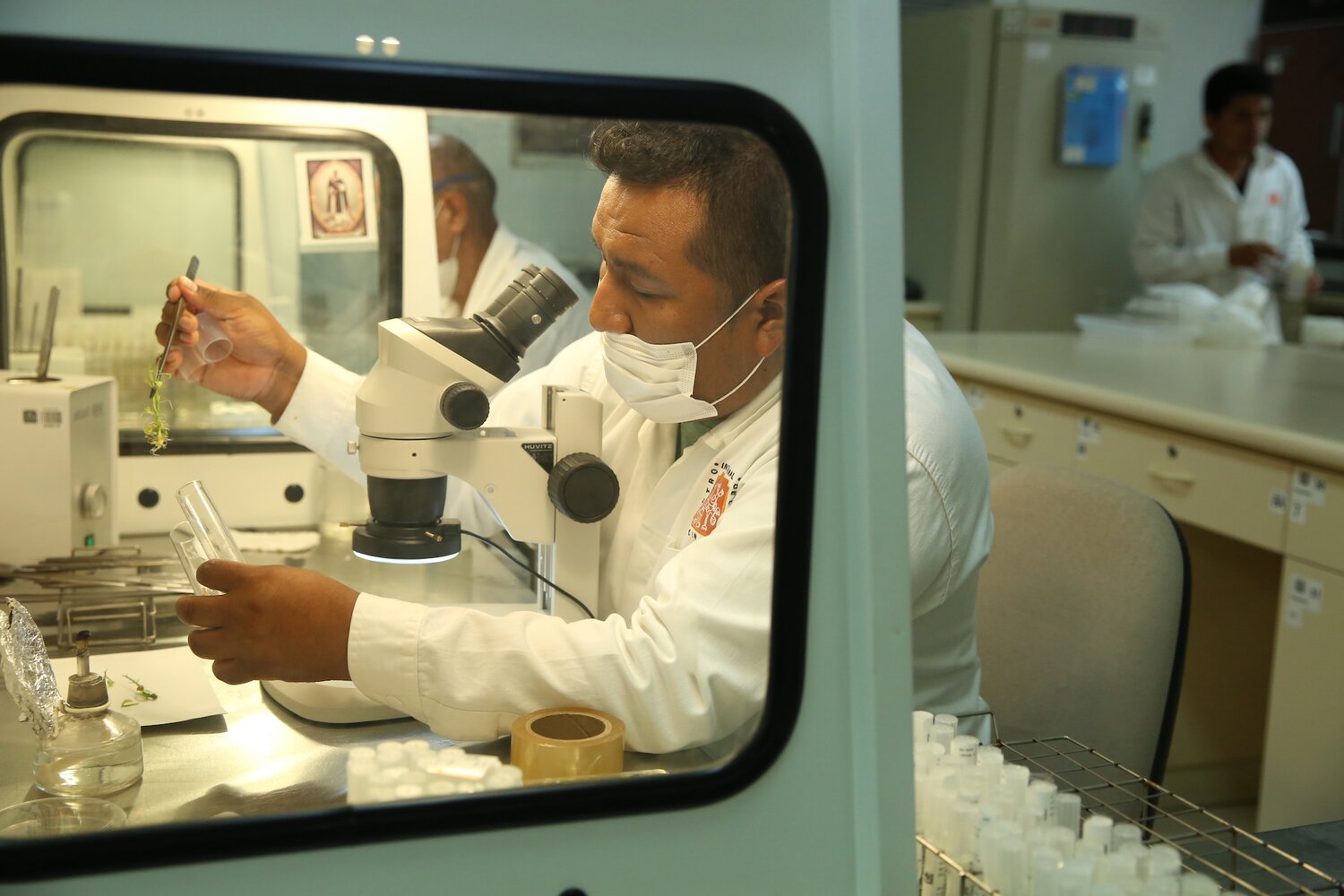
CIP staff performing potato micropropagation under aseptic conditions, in a laminar flow chamber. Cultures are done using microcuttings (stem segments) with 1-2 buds and placing two segments in each test tube into potato propagation medium.
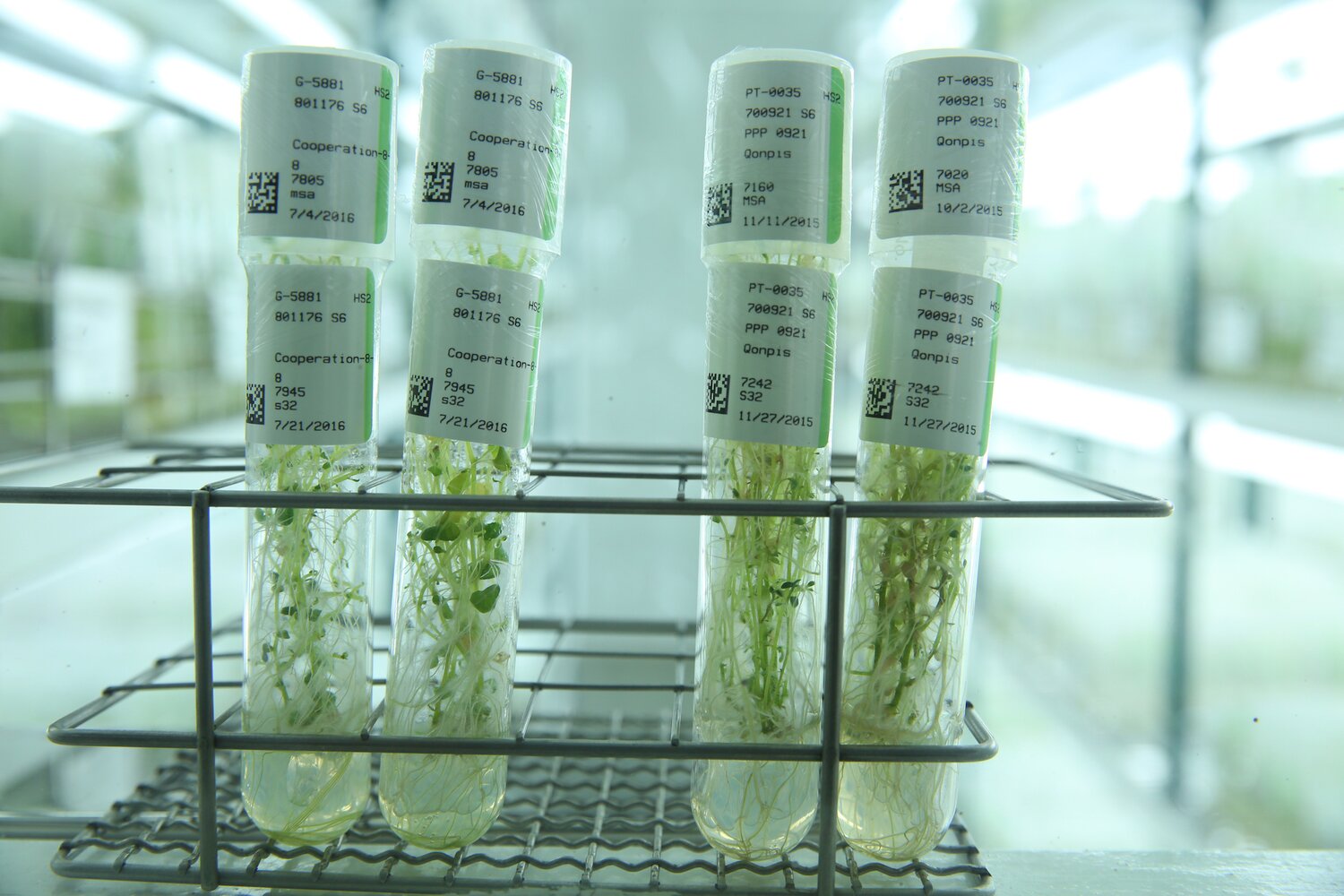
In vitro potato plants of two potato varieties: Qompis a landrace actively grown in Andean countries due to its tolerance to abiotic stresses; and Cooperation 88 an improved variety grown in large acreages in China.
Genebanks, the world’s insurance policy against hunger
Genebanks, such as the one housed at the International Potato Center (known as CIP for its acronym in Spanish) help preserve diversity that can be used to fuel crop-driven hunger solutions for generations to come. Dr. David Ellis, head of the CIP genebank, shares with us four ways genebanks help safeguard against hunger.
How does maintaining crop diversity protect against hunger in the long run?
Dave: Urbanization, road construction and climate change are causing a rapid loss of plant diversity. In the case of potato, we’ve seen that small rises in temperature mean that farmers need to go further up the mountain to plant at temperatures better suited to traditional varieties. Those potatoes might not, however, produce well at that higher altitude. The loss of one potato variety might not be a problem today, but it may be a problem tomorrow if that particular variety has a unique characteristic, such as disease resistance, that could help develop varieties suited to changing climatic conditions.
To put that loss into perspective, potato farmers in the Andes have had to move their crops up to 200 meters up slope in the past 30 years alone. Protecting the existing diversity today means that we’re ensuring your great-grandchildren have the same opportunities to use diversity for crop improvement that we have today.
Preserving genetic diversity is critical to developing new varieties that help farmers adapt to the challenges they face. As of 2014, almost two million hectares have been planted worldwide with the help of CIP germplasm.
Categories: For The Press, Potato, Sweetpotato
